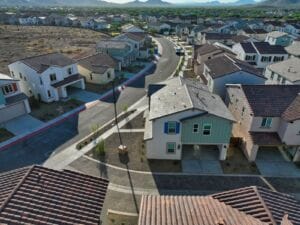Arizona is one of the top five states in the U.S. adding Latino home buyers in the past 10 years, with nearly 82,000 new homeowners, according to a 2021 study by the National Association of Hispanic Real Estate Professionals.
That and other data are part of the annual report “Datos: The State of Arizona’s Hispanic Market,” a compilation of studies put out by the Arizona Hispanic Chamber of Commerce to highlight the importance of the Hispanic community’s contribution to the state and national economies.
READ ALSO: Arizona Hispanics’ economic impact will hit an all-time high by 2022
This year’s report focused on Latinos and housing, predicting that 70% of new homeowners nationwide will be Latino through 2040. Nationally, Hispanic buying power was $1.9 trillion in 2020, up 87% from 2010.
Housing is the basis for overall community growth, said Gloria Muñoz, executive director of the Housing Authority of Maricopa County.
“We need to rethink housing,” said Muñoz, who discussed the report at an online news conference Friday. “Housing, I tell everyone, is the base. From your home you go to work, you go to a school. At home, you recover when you’re tired.”

This is the 25th year for the Datos report, a comprehensive look at general economic growth and disparities in the Grand Canyon State, where the Hispanic population is nearly 32%, putting Arizona fourth among states with the highest Latino populations.
The report outlines the impact of the state’s second-largest demographic group on education, the economy, employment and environment.
Among other statistics, the report shows that Latino students currently make up 46% of the K-12 student population in Arizona and represent the majority of the state’s future workforce.
The report comes shortly after census data revealed that Latinos are now the largest ethnic group in Phoenix, surpassing whites by less than 1 percentage point.
The report highlighted several statistics on the strength of Latino homebuyers, particularly in metro Phoenix.
The report said the future of Hispanic home-ownership is the younger population, and Phoenix is among the top 20 metro areas with “the most mortgage-ready Hispanic millennials.”
Hispanics own one in six homes within the Phoenix designated market area, according to a 2020 study by Geoscape Intelligence System that was included in the report.
Nationally, Hispanic spending on housing has tripled since 2000 as a percentage of the GDP, to $371 billion, compared with a doubling in spending for the general population.
But roadblocks to home ownership remain. Tight mortgage credit, low housing inventory and the effects of the pandemic on employment may stymie home ownership for Latinos going forward.
The housing crisis in Arizona will force many Latinos to remain renters, Muñoz said, pointing to the increase in homeownership by investors, who turn the properties into rentals.
“It’s important to recognize, if the future buyer is Latino, what are they going to buy?” she asked. “Who can compete with Wall Street?
Despite the projections for economic growth, the report noted downsides for Hispanic people, especially women. The odds of bank loan approvals are roughly 60% lower for Latinos than for white-owned employer businesses, the report found, and a Latina would have to work 22 months to reach the same income level as their white male counterparts earned in the 12 months of 2019.
For Petra Falcon, executive director of Promise Arizona, who also spoke at the news conference, building up the state’s political and economic climate for the Hispanic community as vital to the future of her five children and 10 grandchildren.
The first step, she said, is education.
“If you give them the tools, then they can do the rest,” Falcon said. “Everybody should have the choice to reach their potential.”
Story by Itzia Crespo, Cronkite News




